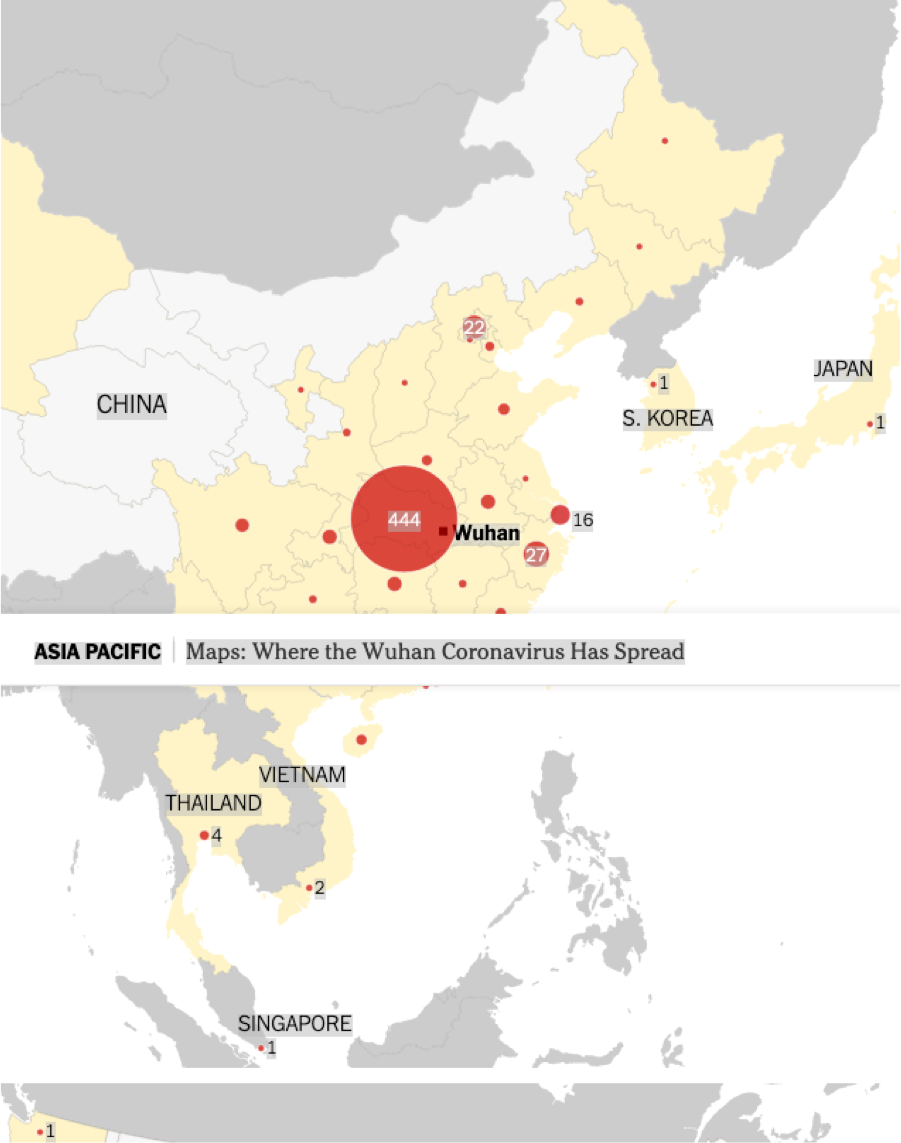Texas and The Broader Environment
Written on January 29, 2020
We messaged earlier this week of a report appearing in news media in the Mexican State of Tamaulipas and our border counties in South Texas of the possibility of a professor of molecular biology at a college in Tamaulipas who had traveled to Wuhan, China during the Christmas Holidays to be with family members and who returned to Reynosa from Wuhan via Mexico City. He was hospitalized with symptoms that were characterized as those of the new coronavirus that first appeared in December in Wuhan. China has stopped air, train and automobile traffic to and from Wuhan, a city of 11 million and extended a ban to several other cities now totaling nearly 40 million people. China had great difficulty in 2002-2003 from a related coronavirus-SARS. That outbreak occurred in southern China with over 8,000 cases, 774 deaths and spread to 37 countries. It resulted in a sharp decline in economic activity in China and with its trading partners. China is a far larger economy today. Already stock prices in Chinese companies have dropped this week.
It is too early in this disease outbreak to determine how virulent the disease is and most who have died have been older men with other health conditions. However such viruses can mutate and because of the substantial world trade and travel with China, the world’s second largest economy, the spread of this virus may be greater and more rapid than occurred 17 years ago.
Decline in Economic Activity
There are two direct consequences for Texas. One is that there has already begun a lessening of economic activity in China. Oil, the largest traded commodity is off 10% this week. 5% of Texas trade occurs with China and this is likely to be affected if the disease expands. The city, Wuhan, is compared to Chicago as a manufacturing hub that includes auto and electronic components used by companies in Europe and the United States. China has pushed expansion of trade in much of Latin America and that will affect Mexico where 35% of Texas trade occurs. Texas is America’s leading export state and 1 out of every 14 jobs in Texas is involved in import-export activity.
Virus in Texas
The second direct consequence is the risk of the virus coming into Texas. So far known cases have only been identified in the State of Washington from a man who had come from Wuhan, China. He is in hospital isolation in Seattle. Known cases are in Taiwan, South Vietnam, South Korea, Singapore and Japan. There are reports of cases in Mexico including one in LA from a flight from Mexico City and one on Thursday, January 23, 2020 reported by Houston media in Brazos County from a student at Texas A&M who recently returned from Wuhan, China. If the virus does come to Texas and spreads, it can have a substantial impact on schools, shopping centers, hospitals and office complexes: all where large numbers of people come into contact with each other. None of our agencies would be unaffected and the reality that most agencies have a presence in urban Texas means the risks of transmission are considerable. I would strongly urge all to follow the pattern of this potential epidemic and prepare procedures if it has something of the impact that is starting to be seen in central China.
The map below shows the somewhat circular pattern as the virus spreads from its origin in the large industrial and shipping port city of Wuhan. I think the two most likely vectors into Texas will be universities that have students and faculty that travel to China and companies that have trade relations with China. That will include electronics and agriculture. My University just issued a reminder of travel to areas that might pose dangers to the traveler and included this area of China as a new locale. The posting here: https://global.utexas.edu/risk/travel/restricted-regions/list
